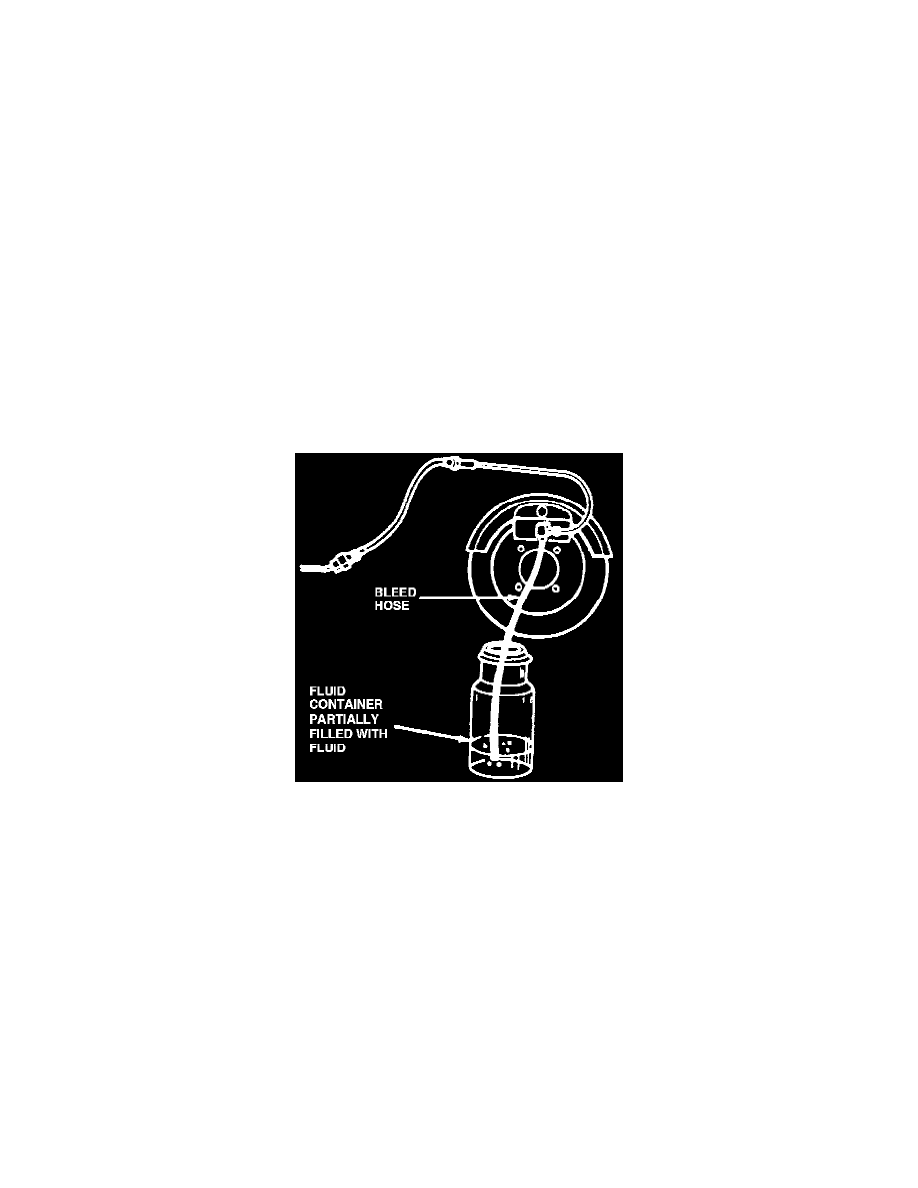2500 4x2 Pickup V10-488 8.0L Magnum (1996)

Brake Bleeding: Service and Repair
Base Brake System Bleeding
The disc brake hydraulic system can be bled manually or with pressure bleeding equipment. On vehicles with disc brakes the brake pedal will require
more pumping and frequent checking of fluid level in master cylinder during bleeding operation.
Never use brake fluid that has been drained from hydraulic system when bleeding the brakes. Be sure the disc brake pistons are returned to their normal
positions and that the pad assemblies are properly seated. Before driving the vehicle, check brake operation to be sure that a firm pedal has been
obtained.
The following procedures may be used to bleed the brake system. If the master cylinder has been repaired or replaced, it can be bled on the workbench to
save time and ensure proper operation.
MANUAL BLEEDING
1. Remove reservoir filler caps and fill with DOT 3 brake fluid.
2. Open all wheel bleed screws until fluid flows from screw, then refill reservoir.
3. Bleed brake system in the following order:
a. Master cylinder.
b. Combination valve.
c. Rear anti-lock valve.
d. Right rear wheel.
e. Left rear wheel.
f.
Right front wheel.
g. Left front wheel.
Fig. 1 Manual Wheel Bleeding
4. Attach one end of suitable bleed hose to wheel bleed screw and insert opposite end of hose into clean, suitable glass container, partially filled with
clean brake fluid. Ensure hose end is submerged in fluid.
5. Bleed each wheel as follows:
a. Open wheel bleed screw 1/2 to 3/4 turn, then press down firmly on brake pedal.
b. Tighten screw, then release brake pedal.
c. Repeat until no air is seen escaping from bleed screw.
6. Repeat bleeding procedure at remaining wheels.
7. Refill reservoir and replace cover. Verify proper brake operation before moving vehicle.
PRESSURE BLEEDING
The front brake metering valve in the combination valve must be held open when using pressure bleeding equipment. This is necessary because the 20
psi exerted by pressure equipment exceeds the valve hold off point, causing it to close. The metering valve is in the forward end of the combination
valve. The valve stem is accessible after removing the rubber protector cap that covers the stem. The stem must be either pressed inward or held
outward slightly in order to bleed the front brakes. Use clip style special tool No. C-4121, or equivalent, to hold stem in or out. Do not use pliers or
similar tools as stem and valve will be damaged.
1. Use a suitable pressure bleeder tank, filled with clean DOT 3 brake fluid. Purge air from bleeder tank before proceeding.
